On the Rise, Together
Campus, city thrive through decades of change
If you graduated from the University of South Carolina 10, 20 or 30 years ago — and haven’t been back recently — you might be surprised at the pace and scope of change on campus and beyond. As alumni returned for Homecoming Weekend (Nov. 1-3), they entered a campus and a city that have both undergone transformational change — often hand in hand, with campus growth helping to fuel growth in the city landscape.
From growth and innovation on campus to an increasingly bustling city life, the university and the city are thriving together in a symbiotic relationship. In many cases, it’s South Carolina alumni themselves who are leading change in the city as entrepreneurs and community leaders.
Below, we take a look at some of the key changes of the past 20-plus years.
Alumni Center
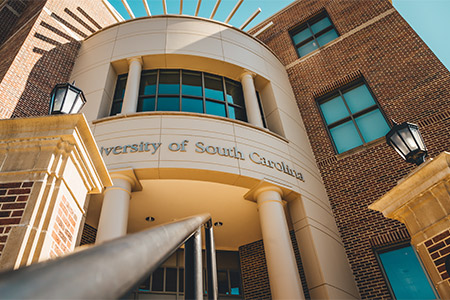
The university opened its Alumni Center in 2015, giving the more than 300,000 Gamecock alumni a home in the thriving Vista entertainment district.
When the university’s new alumni center opened in 2015, people took notice — and how could they not? The 60,000-square-foot event space and alumni association headquarters is situated just across the street from the Columbia Metropolitan Convention Center and a short strut from some of the city’s most popular bars and restaurants, multiple hotels and the Colonial Life Arena. In the short time since its grand opening, which featured a concert by country music star Brad Paisley, the center has hosted lectures, weddings, a bourbon tasting, even a University of South Carolina-sponsored TEDx event, which brought together some of the biggest influencers on campus in 2018. That same year, the alumni center was officially rechristened the Pastides Alumni Center in honor of President Harris Pastides following the announcement of his retirement plans.
Darla Moore School of Business
The business school got its new name in 1998, so it only made sense that it would also need a new home. Ground was broken on the new building in 2011 and it was officially dedicated in 2014. Created by world-famous architect Rafael Viñoly, the building was designed to foster collaboration, whether among students working on a project, faculty working with students or the greater Columbia and South Carolina business communities coming together. Its innovative design combines the latest learning technology with environmentally responsible engineering to meet the needs of students while enhancing the school’s ability to create and enhance corporate partnerships.
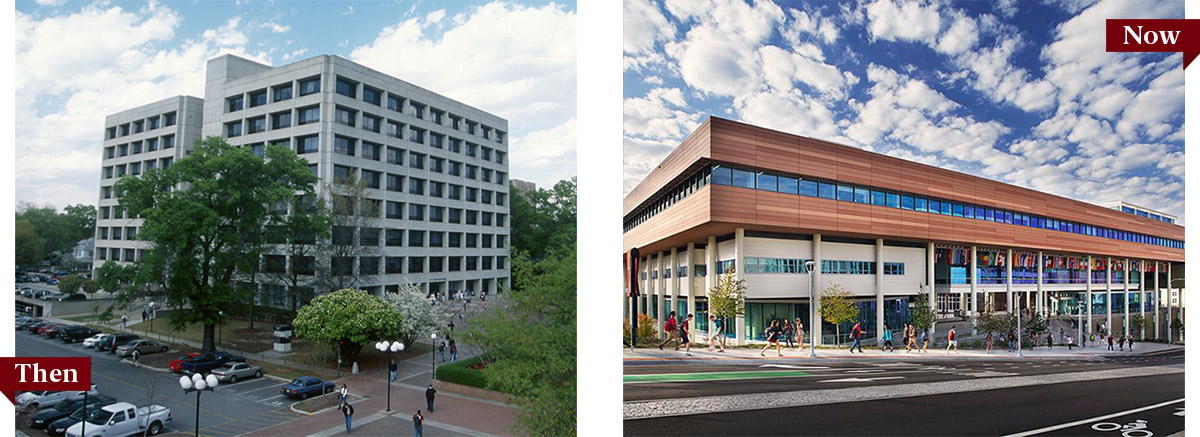
Former site of the business school, the Close-Hipp Building is under renovation. The new home of the Darla Moore School of Business, at Greene and Assembly streets, was officially dedicated in 2014.
Arnold School of Public Health
Outside of university and city insiders, the idea of the University of South Carolina driving innovation in the health sciences was still fairly new back in 2006. Sure, UofSC President Andrew Sorenson had introduced the idea of an innovation district in 2005, but there wasn’t much to point to in terms of physical infrastructure. Enter the Arnold School of Public Health. Led until 2003 by Harris Pastides, the Arnold School — which was and remains the only school of public health in South Carolina — already had a strong track record of innovative research. What it didn’t have was a modern facility to call its own. Today, the school is a cornerstone of the university’s health science offerings, with nearly 2,000 undergraduates, more than 700 graduate students, major support from the National Institutes of Health, and several cutting-edge research hubs exploring everything from communications disorders to nanotechnology.
Founders Park
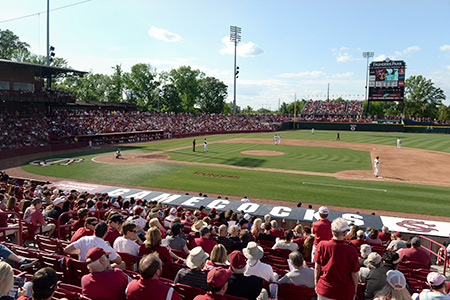
Opened in 2009, Founders Park routinely ranks among the Top 5 in the SEC for attendance.
We can’t say there’s a causal relationship between the 2009 opening of Carolina Stadium (now Founders Park) and the back-to-back national championships the Gamecock baseball team earned in 2010 and 2011 — but surely it didn’t hurt morale to play in a new stadium. Things got off to a great start on opening night, which featured an opening pitch from Harris Pastides, a performance by Darius Rucker and a 13-0 victory over Duquesne. In 2013, the stadium earned props from website Stadium Journey as the second-best Division I baseball venue, and in 2015 it adopted its new name. Founders Park routinely ranks among the Top 5 in the SEC for attendance.
Ernest F. Hollings Special Collections Library
The Hollings Special Collections Library — named for the late U.S. senator who represented South Carolina from 1966 to 2005 — occupies a chunk of campus real estate that for more than 50 years was home to McBryde Quad, the old fraternity row. If you didn’t spend much time in the library as a student, there are plenty of reasons to come back now. The library, which opened in 2010 as a major addition to the Thomas Cooper Library, is a treasure trove of rare books, political memorabilia and more, including 30 medieval books printed more than 500 years ago. The largest collection of Scottish literature outside of Scotland resides here — think Robert Burns — as do collections relating to Joseph Heller, William Faulkner and F. Scott Fitzgerald. Want to see something cool and modern? Check out the new comic book collection, all 19 tons of it, which covers every genre and publisher of American comic books since the early 20th century.
School of Law
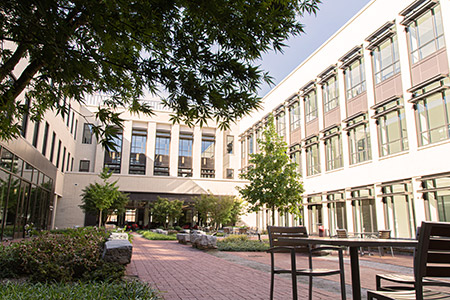
University of South Carolina law students got a major upgrade when the new School of Law opened on Senate Street in 2017. The new building sits just a few blocks from the S.C. Supreme Court, whose justices are all UofSC law alumni.
The University of South Carolina School of Law has experienced a few changes of address over the years, moving from the original Petigru (now Currell College) to the second Petigru (now home to the College of Arts and Sciences) to its longtime home on Main Street, where law school faculty began holding court in 1973. But its relocation to Senate Street in 2017 truly raised the bar. The massive three-story building features two well-appointed courtrooms, a 24-hour student commons area, an impressive library, a lamp-lit reading room, ample office and classroom space and a gorgeous chandelier designed by renowned glass artist Dale Chihuly. The building, which opens onto Gervais Street as well as Senate, is also situated just blocks from the Supreme Court of South Carolina, the State House and the offices of some of the city’s most powerful law firms, putting students and faculty in the thick of the action.
BullStreet
What’s a city to do with 181 acres of land in the heart of its urban core? For Columbia, grappling with the largest urban revitalization project east of the Mississippi, the answer has been to think big. In 2016, BullStreet saw the opening of a 9,077-seat baseball stadium (now called Segra Park), a 108,541-square-foot office building (the First Base Building) and the co-working space SOCO, which occupies what was once the bakery for the state mental hospital. BullStreet has since seen Bone-In Barbecue, tech firm Capgemini and several other tenants come to the neighborhood, and outdoor outfitter REI is on the way. Oh yeah, the BullStreet campus is also the future home of the School of Medicine.
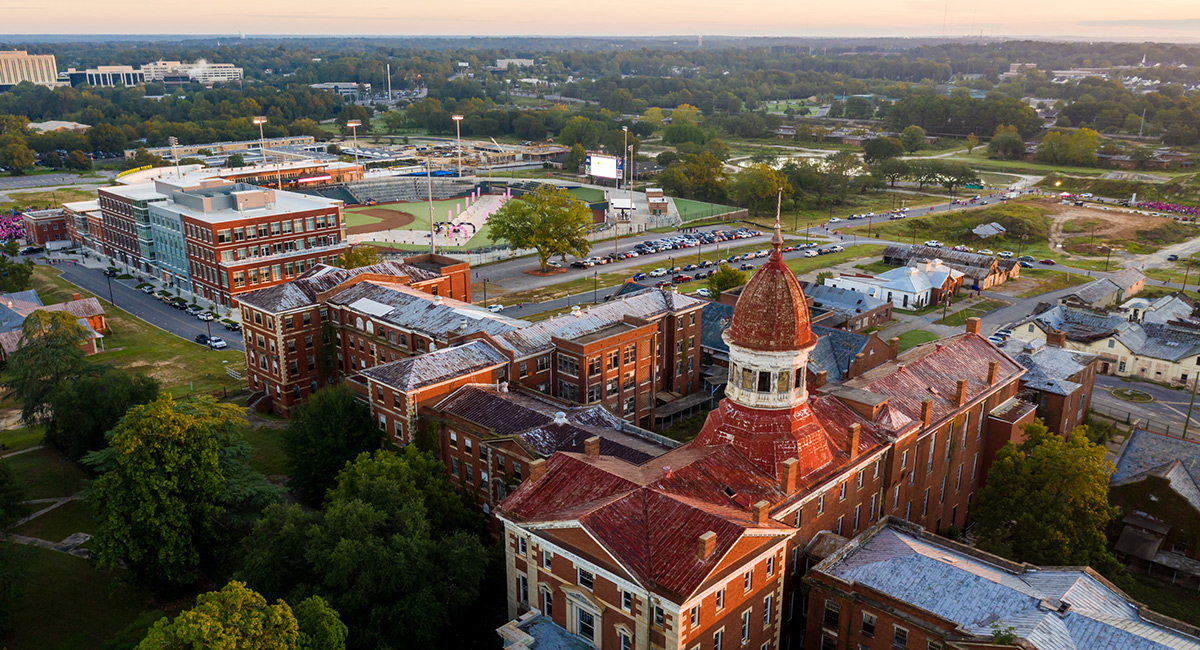
The property that once housed the state’s psychiatric hospital, BullStreet is now home to the region’s largest urban revitalization project, including a minor league baseball stadium, an office building and more. The university plans to develop a health sciences campus at the site to include the School of Medicine. Photo by Jeff Blake
Breweries
In 2000, Columbia was home to exactly one craft beer brewery — the Hunter-Gatherer, which opened the taps at the corner of Main and College streets, across from the College of Education, in 1995. Now, the Capital City can claim half a dozen within the city limits, including River Rat, Columbia Craft, Swamp Cabbage, Cottontown Brew Lab and the enormously popular Bierkeller pop-up beer garden operation started by alumnus Scott Burgess in 2015. Not to be outdone by all the flood of new brew, Hunter-Gatherer founder and alumnus Kevin Varner launched a second, much larger location in 2017. Housed in the historic Curtiss-Wright airplane hangar next door to the Jim Hamilton-L.B. Owens Airport, the new H-G is a destination for aviation buffs and beer nerds alike. And yes, they serve flights.
Hootie monument
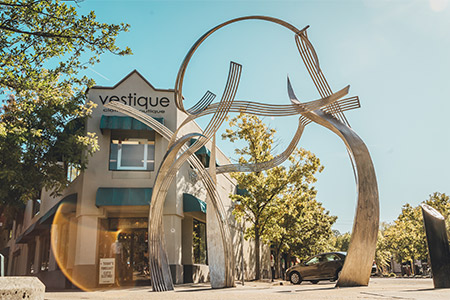
Hootie & the Blowfish started as a cover band playing fraternity parties and clubs surrounding campus and went on to become one of the hottest bands of the ‘90s. In 2010, Columbia paid homage to the band with a monument in Five Points, next to Yesterday’s restaurant.
For Gamecocks of a certain age, the band Hootie & the Blowfish instantly brings back memories of late nights in Five Points. The band of college classmates got its start in the late 1980s and early 1990s in the bars and music halls of the restaurant and entertainment district just east of campus. To honor the hometown band in 2010, the city unveiled the Hootie & the Blowfish Monument — a brushed metal contemporary art sculpture — at Harden Street and Santee Avenue, a small stretch of which was honorarily renamed for the band.
Main Street remade
The retail exodus to the suburbs that swept America in the 1970s and ‘80s also affected Columbia’s downtown business district, but Main Street’s revitalization in recent years has been phenomenal. One of the first sparks came in 1998 when the Columbia Museum of Art moved from its longstanding location on Senate Street (now the site of the university’s School of Law) to Main Street, where it occupies a former department store building. Other businesses and attractions followed, including Mast General Store (2011), Nickelodeon Theater (2012) and the Soda City market, which began in 2005 in Olympia as the All Local Farmers Market and has morphed into a weekly Saturday morning street fest on Main. The 2014 conversion of the Palmetto Center to student apartments at The Hub put 800 college students in the middle of Main, helping to spark a flurry of restaurant openings and further development of the city’s downtown corridor.
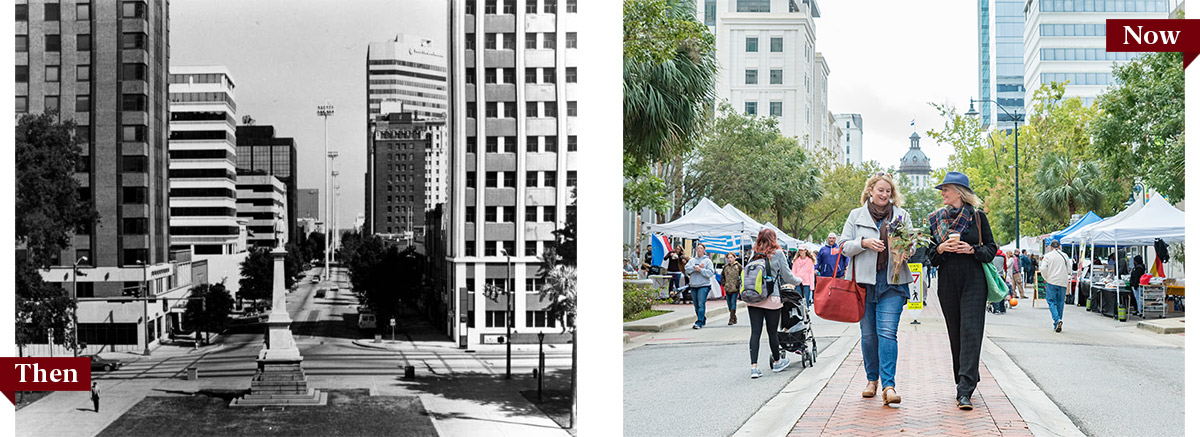
The vibe of Main Street has clearly changed from this 1980 view (left), which shows streetlights that sat in the center median towering over downtown. Today, Main Street is in the midst of a transformation, with the Soda City market every Saturday, hundreds of students living downtown and an influx of restaurants and shops.
Photo credits: (Then) Bicentennial photograph collection, Walker Local and Family History Center at Richland Library; (New) Crush Rush, Experience Columbia SC
Horizon I
Entrepreneurs and established companies need the help of local governments and academic institutions to innovate. Governments need industry to help meet the needs of growing populations. The key to success is collaboration, and the university’s Office of Economic Engagement is the place where it all converges, helping build relationships between researchers and industry partners, with a particular focus on aerospace, cyber security, advanced manufacturing, healthcare and supply chain. The OEE, working with its corporate and government partners, has created over $790 million in indirect economic impact since its founding in 2013. The office makes its home at Blossom and Main streets, in the Horizon I building — the university’s first building in its Innovation District, which opened in 2009 as a gateway between the city of Columbia and the university. The 125,000-square-foot building is also home to laboratories and offices.
Colonial Life Arena
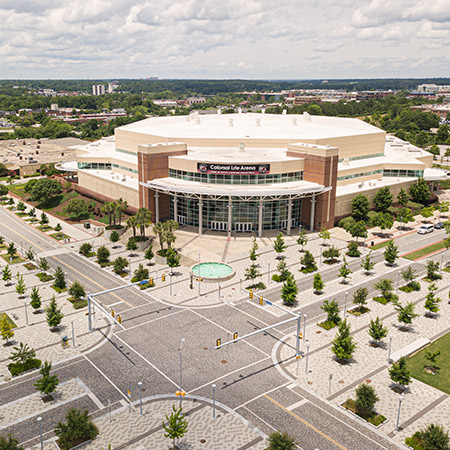
The Colonial Life Arena opened in 2002 and has hosted everything from concerts to monster truck shows to South Carolina men’s and women’s basketball action. More recently, the area in front of the arena, Foundation Square, has created a pedestrian-friendly urban park.
Few buildings better symbolize the connection between the university and the community than the Colonial Life Arena. Opened in 2002, the 18,000-seat arena serves not only as the home of Gamecock basketball, but also as a cultural anchor of the city’s Vista district. Among the many artists to perform at the arena have been Prince, Bruce Springsteen, Drake, Elton John, Janet Jackson, Cardi B, John Mayer and, of course, Hootie & the Blowfish. In 2019, the arena hosted its first NCAA men’s tournament games since 1970. It’s not just music and basketball, though, as Colonial Life Arena has also hosted Cirque du Soleil, monster truck shows and more. Altogether, the arena is a boon to both town and gown, attracting world-class talent, bringing tourists to the city’s restaurants and hotels, and boosting the overall cultural vibrancy of the city.
Foundation Square
There has been a transformation at the intersection of Greene and Lincoln streets, an area now known as Foundation Square. The four corners are home to the Colonial Life Arena, the address for major athletic and entertainment events; an open lawn and amphitheater-style seating for pre- and post-event gatherings; a collection of gardens, granite sculpture and water features; and a Carolina-themed restaurant, 1801 Grille, attached to student housing in the 650 Lincoln Street development. The square, which was developed in 2017, is the latest step in the Greene Street corridor, a pedestrian- and bike-friendly gateway that eventually will connect the university to the Congaree River.
Riverfront development
With several local governments and the nonprofit River Alliance coming together, the past two decades have seen a lot of progress in Columbia’s longstanding efforts to realize the potential of its rivers. Riverfront Park opened all the way back in 1983, but more recent additions include the West Columbia Riverwalk Amphitheatre and the Three Rivers Greenway, plus plenty of options for tubing and kayaking. There’s also a Saluda Riverwalk extension in the works. Not to be overlooked are some close connections to the university, including the 12,000 Year History Park, a unique archeological site long championed by Cayce Mayor Elise Partin, who also serves as adjunct faculty in the Arnold School of Public Health; pop-up beer events by alumnus Scott Burgess (see “Breweries”); Stormwater Studios, which often features artworks by UofSC faculty and students; and Foundation Square (see entry above), a public urban park that will eventually connect campus to the riverfront.
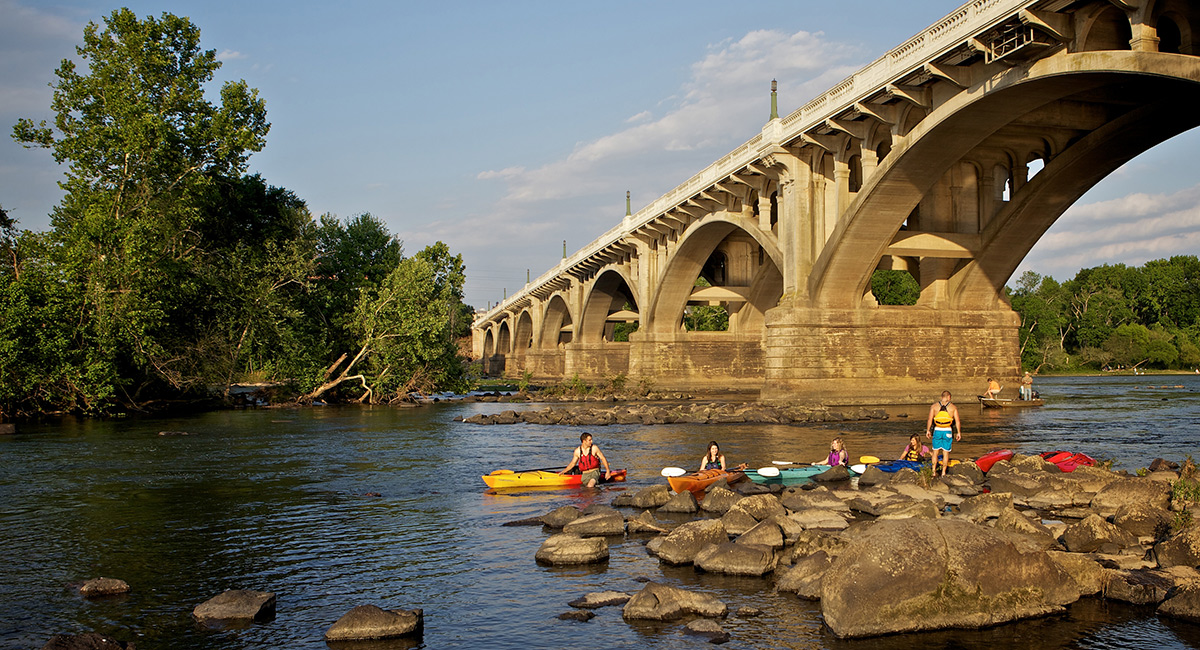
The riverfront has become an increasingly vibrant part of the region in recent years. As local governments continue to revitalize the area — and the university continues to develop westward — connections between the community and the university will only deepen. Photo by Brett Flashnick
Private student housing
Columbia has long had pockets of private student housing embedded in various parts of town, but UofSC’s growing student population — along with a city tax credit — has led to a boom in recent years. These new luxury apartment buildings, and the thousands of students who live in them, have helped bring new energy to Main Street, the Vista and other parts of Columbia that ring the campus. To be clear: With amenities that earlier generations of college students couldn’t have imagined, these are not your parents’ student apartments.
Springs Brooks Plaza
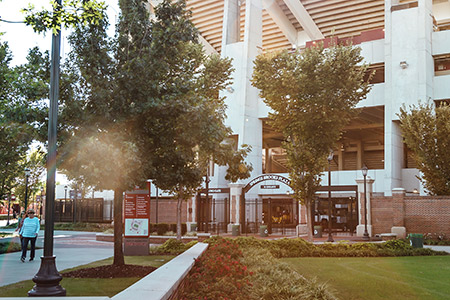
Springs Brooks Plaza, a $14.5 million renovation around Williams-Brice Stadium completed in 2015, represents a major upgrade in the gameday experience.
Jack Springs had a thriving tailor shop in Columbia when the lifelong Gamecocks fan and alumnus approached then-head football coach Paul Dietzel about outfitting the team with blazers to wear to road games. The blazers — which Springs designed and provided to the team in the late 1960s and early ‘70s — were an instant hit with players, fans and even opposing teams. To honor her father, Tami Springs and others helped finance a $14.5 million renovation around the football stadium that created the Springs Brooks Plaza, a brick and tree-lined walkway that surrounds the stadium and opened in 2015. Additional lighting and bathroom facilities are also a part of the plaza, as is a display featuring one of the original travel blazers made by Jack Springs.
Strom Thurmond Wellness and Fitness Center
When it opened in 2003, the Strom, as it’s come to be known, was a shiny new fitness center with all the bells and whistles, from an indoor track and swimming pool to a climbing wall, strength and conditioning machines, and almost every type of playing court imaginable (badminton, anyone?). After 16 years, the shine hasn’t worn off, and students, faculty and staff continue to flock to the facility. The Strom, built on what once was the site of Gibbes Machinery Co. on the corner of Blossom and Assembly streets, represents one of the university’s major investments in student health and wellness and was also the first major project in the campus’ westward migration.
Honors Residence Hall
The South Carolina Honors College, ranked as the nation’s best among public universities, has its own six-story residence hall that can accommodate nearly all of the college’s freshman class. The Honors Residence Hall was built in 2009 on the former site of the Towers (Honeycombs) residence hall complex bordered by Blossom, South Main and Sumter streets. Like most of the university’s buildings constructed since the early 2000s, the residence hall earned a LEED (Leadership in Energy and Environmental Design) Gold certification.
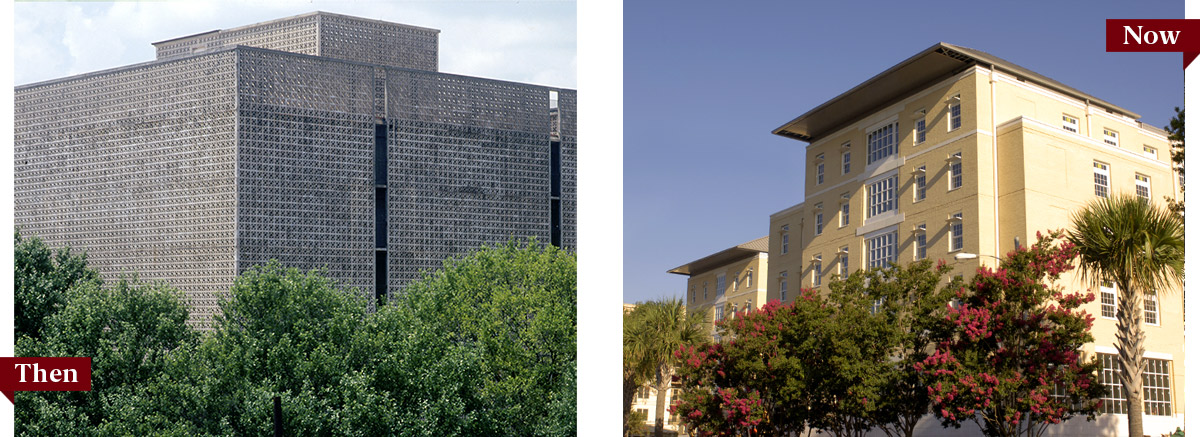
Returning alumni who once lived in the Towers might find it hard to imagine life in the Honors Residence Hall, which features in-building classrooms, a dining hall and a coffee bar.
The Vista
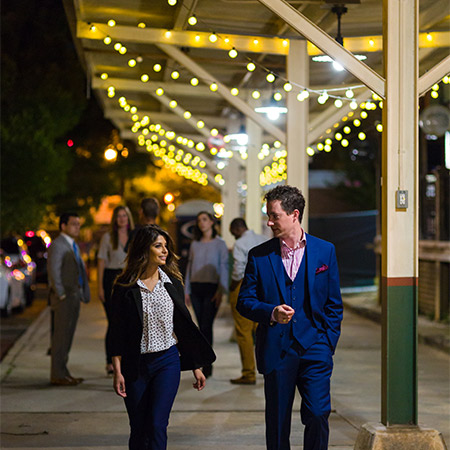
Once a sleepy warehouse district, the Vista is now one of the city’s key districts for nightlife, dining and shopping. The area is particularly bustling when visitors are in town for university events such as football, basketball or commencement. Photo by Sean Rayford
Prior to the 1990s, the warehouse district between Assembly and Huger Streets was a pretty sleepy part of town, especially after sundown. And while it was located just a few blocks from campus, it felt pretty removed from the University of South Carolina. Well, not anymore. Over the past 25 years the arts and entertainment district has grown a steady clip. Nowadays, the Gervais Street corridor bustles day and night, and why not? Diners can choose between local bars and restaurants at pretty much every price point or national chains that offer familiar fare. Music fans can check out concerts at the Senate or the Art Bar, art lovers can peruse local galleries and people watchers can, well, watch all the people. And if you’re staying overnight — say, to catch Dawn Staley’s women’s basketball team hustling the hardcourts — you can choose between half a dozen hotels, all within walking distance of the Colonial Life Arena. Oh, and don’t forget the Pastides Alumni Center, at the corner of Senate and Park Streets. Maybe you didn’t wander this way when you were a student back in the day, but if you come back to town as an alumnus, it’s practically inevitable.